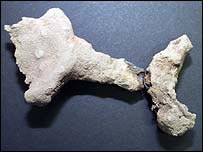I feel that there is an industry trend to refer to migration era swords of period relevance and cultural usage that is much broader than “Viking” as a “Viking sword.” Yesterday I was looking through archeological articles of instances of swords found in actual Viking graves, and was surprised by an academic’s statement that the pinned construction hollow pommels are primarily a Saxon style of construction, rarely found north of the Kent (River Thames) in cases of authentic grave finds. The actual Viking grave examples from real “Viking era” that were similar in outer appearance were stated in the article to be typically solid, with false cosmetic pins, similar to say a present day Albion Huskarl. This excludes hoards that may have contained foreign booty, not known if preferred for personal ownership that one would literally take to their grave. The author pretty much pin pointed the difference (more modern, solid peened pommels) as a distinguishing feature to help identify a real Viking’s personal sword in true “Viking era.” In looking at some of the Albion “Viking era” products, the Scandinavian examples used as historical inspiration struck me as conforming fairly well to this idea that the Danes and Norse preferred somewhat more modern and solid sword furniture construction than the older migration era and neighboring Anglo-Saxon’s swords.
As of September 2007, a major excavation of a mass Viking graveyard site is underway. This may (hopefully) yield a number of authentic burial swords from irrefutable Vikings of the era they were famed for. A fairly recent example comes from the metal detector grave-find of Peter Adams near Cumwhitton (more Northern England.) The pommel has been judged to be solid, and looks to be similar to the Albion Theign sword model pommel.
http://www.bbc.co.uk/cumbria/content/articles...ture.shtml
The photo below is of it.
